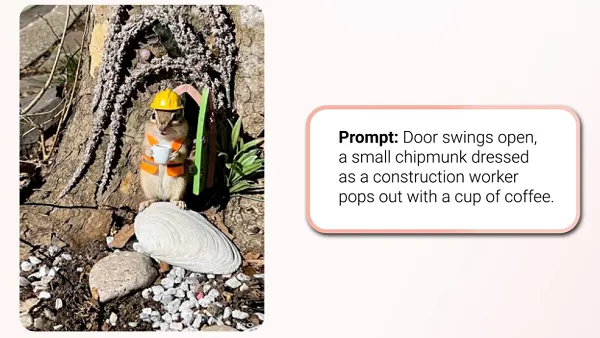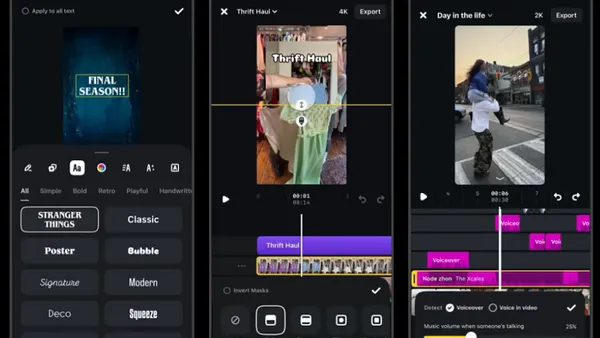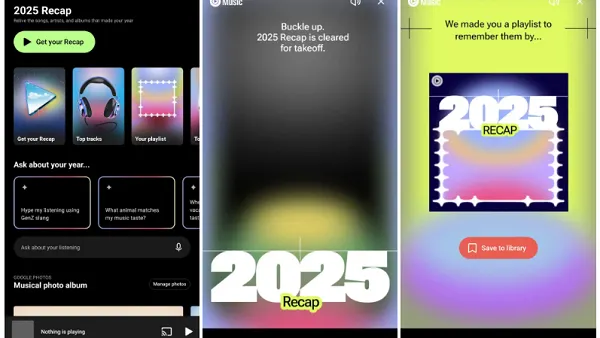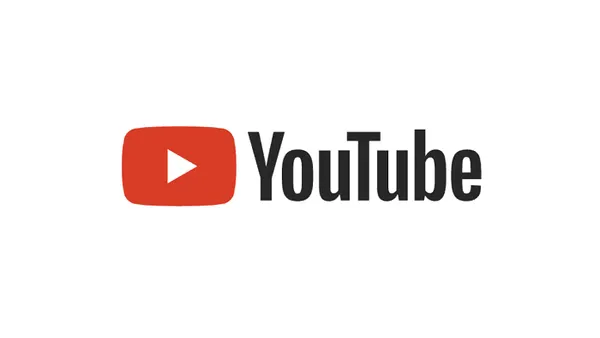I know what you're thinking: "Verdino has finally lost his mind." While I'll admit that, to the casual observer, Twitter and Second Life bear very little resemblance to one another, the truth is that there are more than a few points of comparison -- both positive and negative, both trivial and significant.
Last night I made a list of nearly twenty similarities -- and that was just off the top of my head, while multi-screening and talking on the phone. Here are 10 of them. Give them a read and weigh in with your own thoughts...1) Both Twitter and Second Life are built around the concept of virtual presence. Sure, they approach presence from entirely different angles, but they are both presence-oriented applications and really only come to life when they are populated by people having real-time conversations. Looking at this through a business lens, when H&R Block began dispensing tax advice on Twitter and offering people the opportunity to 'sit' with a tax advisor in Second Life (both programs were piloted in 2008), they were really just testing two variations on the same theme -- the ability of a company to use new technology to have real-time conversations with its customers.2) Avatars, avatars, avatars.
If you're gonna maintain a virtual presence, then you've gotta represent. Second Lifers agonized over whether their Shogun warrior or hot chick in leather avatar best reflected their mood on any given day. Twitter users put similar emphasis on which itsy bitsy square image of their face makes them look smartest, most approachable, funniest, most attractive, weirdest or most like their SL avatar.3) Twitter and Second Life were both hailed as the next big thing -- until someone pointed out that they weren't actually big. Remember the heady days of 2006, when each morning brought a fresh report of just how big Second Life was getting?
SL-maker Linden Lab loved crowing about the millions and millions of residents living in the virtual world, with the overall number growing by tens of thousands per day. The only problem was that a deep dive into the numbers revealed that the vast majority of those so-called residents were simply inactive accounts. Similarly, public estimates put Twitter's total user base somewhere in the 4-6 million member range, leading to much conversation about the mainstreaming of microblogging. But topline numbers only tell part of the story. According to HubSpot's State of the Twittersphere, the number of active users is a mere fraction of the total.
Which kinda leads me to my next point...4) Twitter, like Second Life, is where the geeks are. I know we think we're normal people, but we're not. We're early adopters. We're social media insiders. We're so-called influencers. We go to parties and, of course, we trade Twitter handles so we can keep in touch. Normal people don't do this. Normal people avert their eyes when we mention Twitter during otherwise polite conversation. This isn't just coming from me -- recently, Twitter CEO Ev Williams stated that he doesn't expect 'real people' to be on the service for another several years.
And trust me: as soon as lots of so-called normal people flock to Twitter, the early adopters will be griping about how the service just isn't the same anymore. In fact, if you're looking to reconnectwithsomeofyouroldSecondLifebuddies, I think I know where you might be able to find them (hint: on Twitter.) Speaking of geekiness...5) Both services gave rise to 'secret languages' that are all but meaningless to people who don't use the service. Second Life gave us sim, rez, HUD, grid and griefers, plus the concepts of the SLURL, Linden dollar and the SLT time zone.
Twitter gives us DM, tweet, tweeple, tweetup and an endless array of otherwise normal English words preceded by "tw-", while providing us with a clear distinction between friends and followers, giving us a new way to use the @ symbol, and fueling the popularity of the tiny URL. If you're an active social media dude or dudette, you probably understood this paragraph perfectly well. If not, I may as well have written it in Klingon.6) Both are built on buggy technology that hardcore users love to hate, but everyone else probably just plain ol' hates.
This was probably Second Life's longest running inside joke and also at the heart of its inability to scale. It lagged, it crashed, it acted as weird as a pink-spotted purple dragon avatar. Twitter eats tweets, drops adds and re-drops functionality willy nilly, and in its brightest shining moments serves up it's now infamous Fail Whale. A casual user might give Twitter a try and walk away frustrated, while the most hardened Twitterati wear their beloved platform's foibles as a badge of honor.7) Google came along to validate both models -- but then failed to make an impact. And nobody cares.
When Google launched Lively last year, many saw it as a sure sign that virtual worlds were picking up steam. But then Google shuttered Lively without much fanfare. When Google acquired Twitter-competitor Jaiku, many took this as a sign that microblogging was mainstreaming. But since it's Googlification, Jaiku has been more or less stagnant. This certainly challenges the popular notion that Google is going to own the entire Internet one of these days, but there's still a shot that they'll just acquire Twitter and get on with it. OK - so now that we have 7 points under our belts, I think it's time to brace for the real hits. :-)8) Both are magnets for lazy marketers.
I'm not going to argue that marketers shouldn't be thinking about how to use Twitter to connect with consumers. I never argued that marketers shouldn't take a serious look at Second Life either. But I kinda wonder how expending resources (if not money) to have someone on your team deliver priority customer support to a mere 10,000 or so Twitter followers without first fixing the traditional customer support infrastructure that frustrates your millions and millions of other customers makes business sense. In fact, is it any different than spending resources (and money) to allow a few hundred or thousand Second Lifers to wander around your virtual hotel or test drive your virtual concept car?
Both reek of "shiny object syndrome" and a shallow attempt to check off a box on a list of innovation tactics. What I'm saying is: if you're a company planning to do Twitter, you need to plan on doing it right. And you need to understand where it fits into the bigger picture. Otherwise, you should be prepared for this year's pat on the back ("great job, you're an innovator") to earn you a prime position in next year's negative case study. But while we're on the subject of next year...9) Nobody will be talking about Twitter next year.
Maybe that's a bit extreme, but it certainly seems like Twitter is riding a massive wave of hype right now. Put another way, Twitter is mainstream media's current "social media it girl" -- just like Second Life was a few years ago. And we all know how that story ended; the wave crashed against the rocks, and the tone of the coverage changed considerably. Second Life went from "you've gotta try it" to "you'd be foolish to waste your effort," and it seemingly happened between the June and July 2007 issues of Wired.
It doesn't take much to turn today's media darling into tomorrow's media target. So maybe people will still be talking about Twitter, but mark my words -- the tone of the media coverage will be a lot less "gee whiz" and a lot more "what were we thinking." But that's OK...10) Much like Second Life, Twitter isn't the real story anyway...
If your social media consultant is telling you that you absolutely must have a Twitter strategy, you need to have security escort them out of your building. Immediately. You don't need a Twitter strategy. You didn't need a Second Life strategy. In fact, there is no such thing as a Twitter or Second Life strategy. Both of these things -- along with the dozens of other emergent media options marketers can choose from -- are at best tactics. At worst, they're just enabling technology platforms. They might have a place in your marketing strategy, but none of these things are the strategy in and of themselves. As marketers, business people and just plain old people, we need to look beyond the story ("hey everyone, shiny new thing here") to find the story behind the story ("we are staring into the eye of a significant new truth.") In the case of Second Life, the real story focused on SL as a peek into the 3D future of the web or a hint at the next wave of human-to-human interaction (don't think so? watch your kids in Webkinz or Club Penguin.)
In the same vein, Twitter itself doesn't matter (at least it doesn't matter much.) What matters is the rising propensity of people to publicly share even the most minute details of their daily lives, the shift from the asynchonous connectivity of traditional social networking to the real time connectivity of presence, and the rising expectations among even a relatively small subset of consumers that everything from information to service to support to access can (and should) be delivered instantaneously.
The real story lies somewhere in that rambling sentence, I think. Try not to miss the tworest for the twees (sorry - see point #5.)
Link to original post









